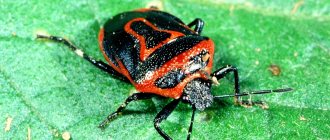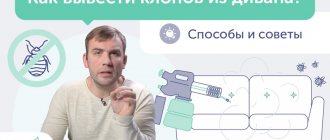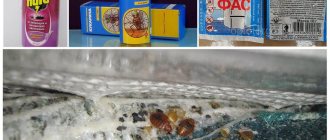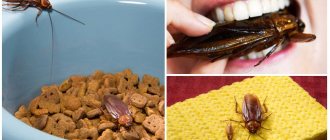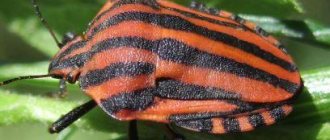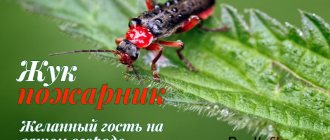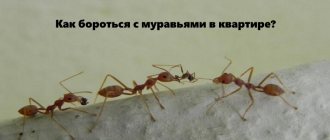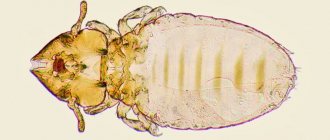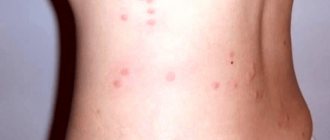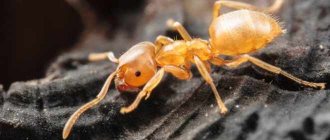Taxonomy of grass lygus horse flies Lygus
Horsefly bugs of the genus Lygus Hahn, 1833 belong to the tribe of Grass bugs Mirini Hahn, 1831; to the subfamily Mirinae Hahn, 1831 [1]; to the horsefly family Miridae Hahn, 1831.
The family Miridae is part of the superfamily Miroidea, infraorder Cimicomorpha Leston, Pendergrast et Southwood, 1954, suborder Heteroptera, order Hemiptera Latreille, 1810, subclass Insecta, class Hexapods (Hexapoda).
There are 164 nominal species of the genus Lygus recorded on Earth, of which 21 species are in the Palearctic [2, 3], and 7 species are in Europe [3]:
- Lygus rugulipennis Poppius, 1911 – wrinkled-winged bug, pubescent, field bug
- Lygus pratensis (Linnaeus, 1758) – meadow bug (field bug?)
- Lygus gemellatus (Herrich-Schaeffer, 1835) – double bug
- Lygus wagneri Poppius, 1911 – Wagner's bug
- Lygus punctatus (Zetterstedt, 1838) – punctate bug (reddish)
- Lygus monticola Aglyamzyanov, 2009
- Lygus orientis Aglyamzyanov, 2009
Only the first two species, being polyphages, are able to penetrate greenhouse structures, where they damage vegetable and flower crops. At the same time, Lygus rugulipennis is not only the most common, but also the most widespread and harmful species [4].
Lygus rugulipennis Poppius, 1911 – European tarnished plant bug
Basionym (name given to the species when it was originally described): Lygus rugulipennis Poppius, 1911 [5] (ruga=wrinkle, penna=wing, i.e. wrinkled-winged). The species was first described by Poppius based on material from Finland.
Known synonymous names:
- Lygus campestris Fallén, 1807 – lowland bug (field bug)
- Lygus perplexus Stanger, 1942
- Lygus disponsi Linnavuori, 1961 – spread bug
- Lygus pubescens obscura Wagner, 1949 – pubescent bug (dark subspecies)
- Lygus pratensis pubescens Reuter, 1912 – meadow bug (pubescent subspecies)
- Lygus pubescens Reuter, 1912 – pubescent bug
- Lygus immaculatus Wagner, 1949 – pure bug
- Lygus pratensis campestris Fallén, 1807 – meadow bug (lowland subspecies)
- Lygus pubescens immaculata Wagner, 1949 – pubescent bug (pure subspecies)
- Lygus obscura Wagner, 1949 – black bug
- Exolygus rugulipennis (Poppius, 1911)
The valid name is Lygus rugulipennis Poppius, 1911.
According to Code EPPO (European and Mediterranean Plant Protection Organization), the hairy bug Lygus rugulipennis is coded as LYGURU.
What to do if the strawberries are very small and gnarled
If you notice one of the reasons in your garden beds, you should not ignore it. Having collected the entire harvest of berries, take care now of next year’s harvest. What you should pay attention to?
Perhaps your strawberry bushes are already old, growing in the wrong place for them, or, as a variety, they have degenerated. In this case, purchase new seedlings and allocate a new planting location for it. The following must be taken into account.
- Make new beds in a sunny and well-ventilated place. The culture is very responsive to heat, but it is not afraid of drafts either. And in the sun it will grow tasty and large.
- Bushes will grow poorly on damp and acidic soils. But dry soil is also destructive for it. Before forming the beds, deoxidize the soil using one of the following methods and fertilize it with humus.
Choose open sunny places with moderate humidity and fertile soil to grow the crop. Learn more about how to properly plant strawberries in the fall.
- If the bushes are young and you do not plan to remove them in the fall, preparing them for winter, water the soil well with phytosporin or potassium permanganate. This is necessary to improve the health of the soil and destroy pathogens.
- To prevent the bushes from freezing in late autumn in the absence of snow, mulch the roots well with pine needles. The needles will also repel pests that can overwinter in the soil. You can also mulch with fallen leaves or humus.
- Plant young strawberry bushes after good predecessors, among them onions and garlic will be the best.
- Grow self-pollinating varieties, then the harvest will not depend on weather conditions. These varieties include the varieties “Russian Bogatyr”, “Berry Polyanka”, “Bolero”, “Honey”, “Florence”, etc.
Morphology of the horse bug Lygus
Horsefly bug imago
Adults of L. rugulipennis are medium in size with a flattened oval body (Fig. 1). The body length of females is 5.7 mm, males 4.7 mm. The body is covered with thin fluff. Body color depends on gender and season of the year. The main colors of the general color are gray-green, brown or blackish. Typically females are lighter in color than males. The pronotum and elytra are more or less clearly punctured.
The head is almost vertical, looking more or less triangular from the front; often (especially in males) with a dark brown, red or dark red variable pattern. The posterior edge of the crown has a distinct transverse rib. The forehead is smooth, without grooves, shiny. The upper half of the clypeus is not covered by the cheeks and is clearly visible from the side.
The eyes are large. The inner edge of the eye is strongly concave.
The antennae are thin, longer than half the body, densely covered with short silvery hairs; attached slightly above the lower edge of the eyes. 3rd antennal segment shorter than 2nd. The length of the second antennal segment is greater than the width of the head.
The pronotum is trapezoidal, its anterior edge is clearly separated by a deep transverse groove in the form of a narrow convex cervical ring. Pronotum in the anterior part with two small, slightly protruding, separated callosal projections. The posterior margin of the pronotum is 1.6-2.3 times wider than the head.
The shield is triangular. Its base is entirely covered by the posterior edge of the pronotum. Pronotum and scutellum with dark pattern. The pattern of the pronotum is often very variable. On the scutellum it is less variable, mostly appearing as an obtuse-angled spot, a complete or partial "W" shape, or a pair of symmetrical triangular spots located along the midline.
The elytra extend beyond the apex of the abdomen. They are clearly divided by grooves into sections - clavus, corium, cuneus and membrane. Corium with three veins. The embolium is located outside the corium. The cuneus is delimited along its outer edge from the corium by a small notch. In Lygus rugulipennis the elytra are densely pubescent, with individual hairs partially overlapping each other. The membrane is dark gray, with two cells: large and small.
The legs are quite long and slender, with coxae close together. The hind thighs are slightly narrower than the crown. Tops of thighs with two brown rings, which may not be closed. The outer side of the legs has a brown spot on the knee and another brown spot (sometimes a ring) distal to the first. The setae on the tibia are black. The apices of the tibiae and tarsi are dark brown. The tarsi are three-segmented.
Rice. 1. Adult individual of the hairy bug Lygus rugulipennis [orig.]:
A) on an eggplant leaf; B) on a sunflower petal
The male genital segment is in the shape of a rounded cone, lies on the apex of the abdomen, and is not retracted into the preceding segments. Genital opening on the dorsal side. At rest, the aedeagus is retracted inward. On the sides of it there are parameres, which differ greatly from each other in shape. The left paramere is larger than the right. Its pituitary gland is flattened in the apical part, the sensitive tubercle is short, densely seated with denticles (Fig. 2, A). The pituitary gland of the right paramere is curved almost at a right angle, the body of the paramere is in the middle of its length with a shallow constriction; at the base with a strongly protruding tubercle (Fig. 2, B). The spicule of the aedeagus is not thickened towards the apex (Fig. 2, B).
Rice. 2. The genital apparatus of the male bug Lygus rugulipennis [orig.]:
A) left paramer; B) right paramer; B) spicula aedeagus
Horsefly bug egg
Ligus eggs are whitish, slightly curved, about 1.7 mm long and 0.5 mm wide. The female, using a serrated ovipositor, inserts each egg into plant tissue, usually at the base of leaf petioles. The upper part of the egg is flattened into a cap; the larva hatches through it. Embryogenesis lasts for 6-14 days depending on temperature.
Horsefly bug larvae and nymphs
Bed bugs go through five instars before becoming adults. In the larval stage there are 3 instars; they are greenish with red antennae and can be misidentified as aphids. As they grow older, in the nymph stage (IV and V instars), they develop four wing pads (rudiments) and five black spots on the chest and abdomen. The total development time of all five ages ranges from 15 to 30 days.
The fourth instar nymph is greenish (Fig. 3, A). Nymph of the 5th age (Fig. 3, B) with a valval body: length 3.7-4.4 mm, width 1.9-2.2 mm [5]. The head is 1.0 mm wide, the crown is 0.5 mm wide. The forehead has a brown stripe in the middle. The eyes are brown, sometimes with a reddish tint. Antennae 4-segmented; 1st and 2nd antennal segments paler; 3rd and 4th – darker; length of antennal segments (mm) 0.5, 1.3, 0.8, 0.7. The pronotum is brown-green, with two close black dots. Pronotum length 0.7 mm, width at base – 1.4 mm. Scutellum with a brown pattern, with two spaced black dots. The rudiments of the elytra are light brown. The abdomen is pale green. Abdominal tergites 2-3 along the midline with a rounded yellow spot in front of the scent gland peritreme. There is one black spot on the 3rd tergite.
Rice. 3. Hairy bug Lygus rugulipennis on an eggplant leaf:
A) nymph of IV age; B) nymph of the fifth age (orig.)
How to fight?
In order to get rid of pests, bushes are treated, using both specialized means and traditional methods. You should also not forget about preventive actions that will prevent the appearance of large colonies.
Specialized means
It should be said that there is no separate means that would be aimed at destroying the raspberry bug. All chemicals have a wide spectrum of action and help fight pests in gardens and vegetable gardens. When used correctly, these products do not harm shrubs.
These include:
- Fufanon;
- Aktellik;
- Phosfamide;
- Karbofos.
For effective results, treat plants 2 times
It is very important to follow these rules:
- The first treatment should be carried out in the spring before the buds open.
- The second is carried out just before flowering.
- It is forbidden to carry out the procedure during the flowering period, this will harm the berries themselves, they will become unsuitable for consumption, as they will absorb toxic substances. In addition, during this period, chemicals will harm the bees.
- It is also prohibited to spray the ovaries, due to pesticides that will end up in the fruits.
Regarding the disadvantages of such treatments. The fact is that pests can get used to chemicals, they develop immunity, and then they will need to change the product to achieve results. Another disadvantage is financial costs.
Traditional methods
For many years, gardeners have been using folk remedies on their plots that have proven their effectiveness in practice.
They have many advantages, the main ones:
- Harmlessness. The use of such products is absolutely safe for people and animals, and, of course, harmless to plants.
- Availability and low cost. Most recipes include ingredients that are found in every home, and if you need to purchase them, they are very cheap.
- Efficiency. The positive result has been proven in practice.
The most popular means include:
- Mustard. You will need to dilute mustard powder in water, proportion 1:10. Stir well and apply immediately after preparation. The bushes are sprayed in any convenient way; you can use a regular broom or brush.
- Onion peel. From it you need to prepare the following solution. Take any container and pour the husk into it. Next, fill it with water and let it brew for 5 days. After which you can start spraying; for this we dilute the solution with water in a ratio of 1:4. This solution can be stored for about 2 months, the main thing is to choose a cool place out of direct sunlight. Bushes are processed 5 or more times during the season.
Another accessible, simple and convenient folk method is planting black cohosh. This wonderful, beautiful plant, which is also called black cohosh, is planted near a raspberry tree or between bushes. It is a natural repellent that is absolutely harmless to plants and people. The advantages of this method are obvious: you do not waste effort, time and money on processing, the garden is beautiful and there are no bugs.
Biological agents
Now you can purchase biological products, which, unlike chemical ones, are absolutely harmless, but cope with pests just as effectively.
- Boverin. The active substance of the drug is fungal spores. The mechanism of action is as follows: when contact is made, the fungi fall on the bug and penetrate the body. Next, the spores develop, which causes the production of a toxin that kills the insect. In addition to direct contact, infection occurs between individuals, so one bug that comes into contact with the drug brings spores on itself and infects other individuals. It is necessary to work with this substance while using protective equipment, as allergic reactions may occur.
- Bitoxibacillin. Here the basis of the drug is bacteria, which have a fatal effect on parasites. This drug is quite popular and has been used with great success for more than 30 years. Regarding the shortcomings, it is worth noting the unpleasant smell of the product. Another minus is the slightly slower result; the parasites die after treatment on about 3 days.
Life cycle of the horsefly bug
The pubescent bug Lygus rugulipennis in its adult stage overwinters mainly in the forest litter and in the branches of coniferous trees located close to the ground.
The species is univoltine in Finland [9]: the bug migrates to cultivated fields in the middle or end of May, egg laying begins at the end of May, and adults emerge in late July or August.
In northern Europe and North America, Lygus rugulipennis is bivoltine.
In Southern Europe (Italy), the bug develops in 3 generations [10].
What harm does it cause to plants?
Horsefly bugs cause a lot of harm to various agricultural and ornamental plants. Weeds also cause damage, although few people worry about them. Their harm lies in the fact that they pierce the leaves and begin to feed on the sap of the plant. They often damage the growing point. As a result, the plant dies or its leaves take on an ugly shape. All this reduces the yield of damaged crops.
Plants suffer even more from adult larvae than from adult individuals - they live inside a leaf or stem, deforming it.
Therefore, the affected leaves usually have an unusual, ugly shape. It can be difficult to notice the bugs themselves on the plant. They have discreet colors and small sizes. You can understand that they feed on plant sap by finding small spots on the leaves - bite marks. After some time, the size of the spots increases and holes appear. Leaves in these places curl and dry out or rot.
Among horseflies, most species live on plants, but there are zoophytophages (they can feed on animal food). The majority of herbivores live and feed on angiosperms, but there are those that feed on mushrooms and ferns. Most horse flies, although they are named after their favorite plant, willingly feed on the sap of others growing nearby. Another name is the field bug.
Feeding characteristics of the horsefly bug Lygus
Lygus Rugulipennis dominates in wetlands, floodplain meadows of small rivers, wet areas, and the edges of deciduous and pine plantations; most numerous in fallow areas and uncultivated fields and areas with ruderal vegetation; quite numerous in agricultural crops (alfalfa, clover, etc.) [3].
With a Holarctic distribution, this highly polyphagous species is widespread on both herbaceous and woody wild plants and crops and has been recorded on more than 320 host plants [11].
In the European part of Russia, field bugs use 257 plant species belonging to 44 families as food.
In the conditions of the Central Russian forest-steppe, L. rugulipennis gravitates towards the common cress Barharea vulgaris; to a lesser extent to Artemisia absinthium and cereals [12].
In Sweden, L. rugulipennis prefers Matricaria perforata, Trifolium medium (L.) and Urtica dioica. in Germany, L. rugulipennis is observed on Senecio vulgaris L., Capsella bursa-pastoris Med., Thlaspi arvense L., Atriplex patula L., Matricaria L. sp., Urtica dioica.
The important role of weeds for field bugs, which serve for laying eggs, as well as food plants for the larvae, is emphasized. Before wintering, L.rugulipennis feed on coniferous or deciduous trees, especially Corylus avellana L. and Quercus L. sp., as well as Calluna vulgaris (L.) Hill. After wintering, Vaccinium myrtillus L., Padus avium Mill., Ribes alpinum, Quercus L. and Salix L. become the main forage plants.
Preventive resettlement measures
People have resorted to different methods by which they can reduce the number of insects on cruciferous plants. This allows you to create obstacles for the spread of bedbugs on the site.
Prevention measures that are effective:
- in the fall after harvesting and in the spring immediately after the first wave of warming, soil is excavated;
- seedlings are protected in different ways: with agrofibre, plastic bottles (they are pre-cut into 2 parts and used wide);
- before the onset of winter, remove organic waste from the site;
- Special traps are placed on the site, the principle of their operation is: the devices are connected to a voltage source, emit light, and when the pests crawl, they die from a discharge of current.
Features of body coloring of the Lygus horse bug
Color changes are observed throughout the life cycle and according to the seasons, and some differences in the color of males and females are also observed. A general pattern in the color changes of L. rugulipennis and L. pratensis from Sweden was revealed by B. Kullenberg (Kllenberg, 1946). According to his observations, young adults are light, green or yellow in color. Then a reddish or reddish-brown color appears. Before wintering, the insects become dark, and in the spring the winter colors fade. Males lighten more slowly and sometimes remain brightly colored until death.
Young adults of L. rugulipennis and L. pachycnemis are grayish-green in color. Then dark and brownish tones appear, more pronounced in males. In addition, in L. rugulipennis the reddish color is included in the general color background (Aglyamzyanov, 1990). The reasons for the variability of the black pattern are not fully understood. The dark specimens studied by E. Wagner (1949b) were recently moulted individuals of the summer generation. He identified them as forms, for example L. rugulipennis f. obscura. Collected by R.S. Aglyamzyanov (1990) individuals of L. rugulipennis with an “abnormally” developed pattern on the pronotum were also of the summer generation.
In L. rugulipennis, M. Boness (1963) noted an inverse relationship between the area of the black pattern and temperature. In his studies, dark pigment appeared in insects that developed at relatively low temperatures (+15C).
Getting rid of parasites
Dealing with the pest is not that difficult, so if you find one on your property, don’t panic. The main thing is to choose the appropriate method of combating strawberry mites and follow it until the insects disappear.
Use of chemicals
This method of killing harmful insects is quite effective. It consists of treating strawberry bushes with special chemicals. There are many drugs that can cope with ticks. Among them are:
- Karbofos. It is a moderately toxic product that, in addition to ticks, also destroys other garden pests. It is recommended to treat strawberries with it at least 2 times during the season. It is best to do this in dry, windless weather at a temperature not lower than + 15 degrees in the morning or evening. The drug should be diluted in accordance with the attached instructions. You need to spray both the outer and inner surfaces of the leaf plate. It is prohibited to use karbofos during flowering.
- Colloidal sulfur. Also used against a number of pests. Available in powder and paste form. It is recommended to use the product at temperatures from +20 to +30 degrees. In colder weather, the drug does not guarantee a 100% result, and in temperatures above 30 degrees, burns may appear on the leaves. During the season, twice treatment is required.
- Neoron. It is a contact acaricide, that is, it acts specifically on ticks. Available in ampoules of 5 ml. It is distinguished by the fact that it does not harm bees much. Bushes with strawberries or wild strawberries should be treated with the drug, following the instructions.
- Fitoverm and Akarin. Belong to the group of biological pesticides. This means that when used correctly, they do not harm human health or beneficial insects. They need to be diluted in a proportion of 20 ml per 10 liters of water, and spraying with these products is carried out 3 times every 7 days.
It is possible to use Fufanon, Actellik, Marolex and other chemicals against the pest.
Biological method
It is another measure to combat the strawberry mite and involves the settlement of insects on the affected area, which contribute to the destruction of the pest. This could be Trichogramma, which lays its eggs inside the eggs of the mite, as well as some types of phytophagous mites that eat the strawberry pest.
Such insects can be purchased in specialized stores or biological laboratories. But this tool is not available to everyone and not in all regions.
Agrotechnical techniques
They suggest proper care of strawberry beds, the use of varieties that are resistant to parasites, and the cultivation of plants that repel ticks. So, to rid the area of pests in early spring, you should remove and burn the remains of damaged plants, because this is where the female strawberry mites are located. The remaining strawberry bushes should be thoroughly doused with water heated to 80 degrees. Only after these measures can you begin normal crop care.
As for the choice of varieties, it is better to focus on those species that are resistant to the strawberry mite. These varieties include Zenga-Zengana, Torpedo, Vityaz, Zarya and some others. New types of strawberries appear every year, so before purchasing you should carefully study the information about them.
It will also help to reduce the number of parasites by planting plants next to the strawberry bed that can repel ticks with their smell. Among them are tansy, lavender, catnip, rosemary, and Dolmatian chamomile.
Folk remedies
You can also fight strawberry mites on strawberries using folk remedies. They involve the use of various herbal decoctions and infusions:
- Infusion of onion peels. To prepare it, 200 g of husk is infused for 5 days in 10 liters of water. After filtering, the infusion is sprayed on strawberry bushes in spring and autumn.
- Garlic infusion. 200 g of fresh garlic is crushed and soaked in a 10-liter bucket of water for 5 days. At least 0.5 liters of infusion should be poured under each plant. To enhance the effect, it is recommended to immediately cover the bed with film for 2 hours after watering.
- Decoction of tomato tops. 1 kg of dry tops is poured with 10 liters of water, left for 3-4 hours, and then boiled for 2-3 hours and filtered. Next, the broth is diluted with water in a ratio of 1:2. It is advisable to add 40 g of laundry soap to the diluted product, after which you can begin processing the bed with strawberries.
For greater effectiveness in the fight against ticks, it is better to combine the above methods. Then the insects will not get used to it, and the result will last for a long time.
Biological features of the Lygus bug
Table. Biological characteristics of the hairy bug Lygus rugulipennis when feeding on green bean pods (temperature 25±1°C, relative air humidity 50-60%, photoperiod 14L:10D) [13]
| Stage of development | Average development time, days. |
| Egg | 10,1 |
| Larva I | 3,3 |
| Larva II | 2,6 |
| Nymph III | 2,8 |
| Nymph IV | 2,9 |
| Nymph V | 4,1 |
| Total (postembryonic stages) | 15,7 |
| Lifespan of a female | 52 |
| Male lifespan | 38 |
| Fertility | 140-190 |
| Duration of egg laying | 25-43 |
Factors provoking pest invasion
Strawberries have luscious foliage and fragrant flowers that attract many pests. Also, ripe berries become a favorite delicacy of worms, ants, slugs, and larvae of various insects. The appearance of parasites during the growing season can be caused by insufficient plant care.
If the gardener does not loosen the soil and dig up the area, you may not notice the beetle larvae that infect the bushes with the onset of warm weather. Slugs and nematodes appear in densely planted beds that are located in the shade or are heavily flooded with water. Also, you should not plant the crop next to plants with which strawberries share common pests.
This is interesting! Ants and aphids often attack strawberries together, feasting on the juice from the leaves and the pulp of the fruit. Therefore, you should not plant strawberries near anthills.
The harmfulness of the Lygus bug
Lygus bugs use the action of "laceration and 20 maceration" to cause injury: plant tissue is drilled or torn and then saliva is injected into the tissue followed by enzymatic action (maceration) and subsequent ingestion of cellular contents.
The most important secreted enzymes found in the salivary glands of Lygus rugulipennis were polygalacturonase, α-amylase and alkaline proteinases [14]. Polygalacturonase is the enzyme primarily responsible for the digestion of plant tissues.
Polygalacturonase in Lygus saliva is a pectinase that enzymatically digests plant cell walls by solubilization (a colloidal permeation process) of the middle lamella of the cell wall.
Once the cell walls are broken down, α-amylases and proteases assist in the extra-oral digestion of cellular contents.
Trehalases detoxify plant allelochemicals, suppressing plant defense mechanisms.
Preferential feeding by Lygus bugs on meristematic tissues can result in hormonal imbalance resulting from localized injury at the feeding site. Hormonal imbalance leads to changes in vegetative growth, such as decreased growth of stems and increased growth of lateral branches, as well as morphological deformation of fruits or seeds.
Because of the important role that auxins play in regulating abscission (the shedding of plant organs) of fruiting structures, abscission of these structures may occur as a result of destruction of auxin-22-producing tissues in meristematic tissues during feeding by the Lygus bug.
Lygus feeding was found to produce less flower abscission when plants were treated with foliar auxin and naphthalene acetic acid [15].
When ligus bugs are present in large numbers, seed filling and maturation can be reduced by almost 100%. Nymphs and adults attack stems and reproductive parts of plants (Fig. 3). As ligus bugs feed, they can inject toxic saliva into the plant and cause seed structures to die and fall off the plant. Even moderate feeding can result in premature bud shed, misshapen seeds and reduced seed viability.
Rice. 4. Damage from the bug, autumn eggplants (second turn) Biense. Photo from 08/2/21 elena.tchecheneva.
Rice. 5. Ovary (pea) of an eggplant, ready to fall off [orig.] The damage from the bug was caused during the budding stage.
Efficiency
So, you picked wormwood or tansy in the yard and are eager to fight the blood-sucking parasites. However, do such products really help remove bedbugs?
Unfortunately, the answer is no. Herbal repellents do help repel parasites, but they cannot cause serious harm to them. Bedbugs quickly adapt to unfavorable conditions and irritants, so after 3-4 days they will get hungry and stop reacting to the unpleasant odor. To remove bedbugs, you need to kill all the adults and their eggs - herbal remedies cannot cope with this task.
Despite their ineffectiveness for complete pest control, they can be used to temporarily repel parasites, as well as to prevent infection. If your neighbors' apartment is infested with bedbugs, you can place bunches of tansy or wormwood near ventilation shafts and outlets to prevent the insects from migrating into your home.
If you want to get rid of parasites forever, then it is better to use high-quality insecticides - modern products have low toxicity for people and animals and are practically odorless. Using good insecticides, you can remove parasites in 2-3 applications.
Measures to combat the Lygus bug
Pesticide treatments should be delayed until the eggs have hatched but before the nymphs have reached IV-V instars.
Eleven pesticides were tested in Arizona [16], but none were active against adult Lygus, whereas some chemicals were very effective on all ages of nymphs. Orthene® and Vydate® showed good results against Lygus, but were not effective enough.
The most effective insecticide against Lygus was flonicamid (Teppeki), developed by FMC. This insecticide had the best control of Lygus nymphs, was the highest performing and required one less application than the other top performing compounds. New chemicals to control Lygus included fipronil (Regent®), which worked slightly better than Vydate but was not as effective as Orthene. Of the neonicotinoids, dinotefuran (Valent) showed good activity. The performance of spiromesifine (Oberon®) was similar to dinotefuran but required one less spray.
In field studies on strawberries against the local species Lygus hesperus (California), the effect of flonicamid (Beleaf 50 SG) was shown at a rate of 199.6 g of the drug/ha. It has been established that the drug moderately suppresses the numbers of both adults and nymphs of the bug when treated twice over 2 weeks [17]. In the same studies, drugs based on thiamethoxam and fenpropathrin showed low effectiveness.
Lack of boron is the first cause of deformation of strawberries
The first reason for the deformation of garden strawberries may be a lack of boron. In dry years, boron deficiency is most noticeable. Also, with uncontrolled application of nitrogen fertilizers or lime, the boron content in the soil is sharply reduced.
Symptoms of boron deficiency can be observed both on the leaves, roots, and fruits of strawberries. Boron deficiency determined by the leaves: strong curvature of young leaves, the leaves begin to curl upward, old leaves have a yellow border along the edge, and the roots become stumpy. Young strawberry fruits do not develop and die. There are a lot of barren flowers: with a severe lack of boron, the ovaries simply die. Boron deficiency on adult fruits - longitudinal stripes appear on the berries of garden strawberries, which gradually become rough, the soft tissues of the berry do not develop in these places, the whole berry looks ugly. Developing and mature strawberries may taper at the end and curl up.
To eliminate boron starvation, boron is added to the soil in the form of boric acid or borax when planting strawberries. This can be done in the spring by mixing microfertilizers with crushed soil when loosening or fine sand.
add boron in June, when berries begin to form. Add boric acid or borax to the water for watering or spraying garden strawberries. Microelements are added at the rate of 5 g per 10 liters of water. Boric acid is first dissolved in one liter of hot water and poured into the main solution.
Biological control method - entomophages against Lygus bedbugs
Peristenus (Hymenoptera: Braconidae: Euphorinae) are known to parasitize Lygus rugulipennis
Peristenus species lay eggs in young mirid larvae. Adult larvae of the parasitoid appear either in the V stage of the bug or in adult individuals, where they pupate. The development of parasitoids is quite long. For example, P. rubricollis takes 47 days from oviposition to pupation. The highest level of parasitism is observed in the second half of July and the first half of August. The life cycle of the parasitoid appears to be synchronized with the development of Lygus.
In Canada, Lygus rugulipennis has two generations of nymphs per year, the first of which usually has a lower parasitism rate (4-27%). On average, the level of parasitization in the second generation of nymphs is above 32%, occasionally reaching more than 60%. Peristenus digoneutis dominates in places where clover grows, while in chamomile plantations P. stygicus and P. digoneutis appear with equal frequency [19].
Lygus rugulipennis eggs have also been reported to be parasitized by Anaphes fuscipennis Haliday, 1833 (Hymenoptera: Mymaridae) [20].
For questions regarding biological protection of plants in greenhouses, development of protection projects, implementation of the IPM method, please contact the technologists ]Bioprotection[/anchor].
Habitat
It will be quite difficult to calculate its location. And it doesn’t get any easier from the fact that their habitat ranges from ordinary grass to ornamental plants. Basically, their location is: grass, flowers and agricultural plants.
They are frequent guests in the CIS countries. And you probably remember more than once a situation when, under the hot sun, having picked and tasted some berry, you wrinkled your face and threw it away, feeling the taste of a beetle. It was a bug.
Prevention measures
Folk remedies often help against pests. For example, soap solutions, decoctions of onion peels, celandine, tansy and other herbs. When cobwebs appear on the bushes, they are removed immediately.
Preventive measures against diseases and pests:
- In the spring, once every 4 years, strawberries are transplanted to a new place.
- In autumn, the soil is dug up to a depth of 10-15 cm and mulched.
- The soil is regularly fertilized with fertilizers.
- It is not recommended to over-moisten the soil.
- Plantings should not be thickened.
- When planting, the distance between bushes is 30-45 cm.
You also need to constantly destroy weeds from the site.
